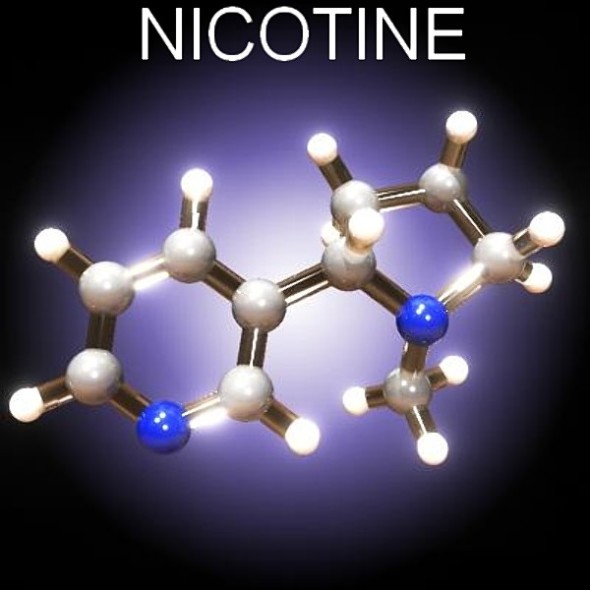Shameless photo-doctoring aside, the so-called World Health Organization (WHO? I said already, the World Health Organization. WHO? The guy on first base. WHO?… OK, I had to do it, I’m done now) is as corrupt and lost in an inescapable quagmire (giggity) of bureaucratic deceit, behind-the-scenes conspiring, and mountainous ineptitude as even the most despicable of national governments on this green planet, Earth. And now that the electronic cigarette/nicotinated E-liquid industry threatens to compete dollar for dollar with the too-big-to-fail “Big Tobacco” corporations, WHO has taken it upon themselves to once again, and with a degree of accuracy that can only be described as creepily preternatural, back the wrong horse in the imagined race for knowledge of Truth. In their divine international immanence, WHO (not to be confused with The Who, rock stars infinitely closer to God than these corrupt bastards will ever be) has released a study. And by study, they mean a very official-looking report full of things their corporate overloads told them to put in it. The study on tobacco regulation is simply full of pure, unadulterated bullshit. And here is a list of that bullshit, each itemized point married with it’s counter-argument for posterity’s sake:
- Segment 2.1 of Report: ENDS (Electronic Nicotine Delivery Systems) pose significant health risks / Manufacturers have not fully disclosed the chemicals used in ENDS. In truth, the exact opposite is true of both of these statements. E-cigarettes do not pose health risks as has been shown time and time again by verifiable, recreate-able, and fully documented scientific research. And I have yet to find a US or European-based E-liquid manufacturer that doesn’t disclose all of the chemicals used in the production of their products. And the vast majority of them print ingredients and occasionally even nutrition labels on their bottles. Their health effects have not been studied. Actually, they’ve been studied extensively by some of the biggest names in scientific research. These products could undermine smoking cessation efforts. I’m not even going to dignify this one with a response, other than to point out that E-cigarette use is on the rise and tobacco (analog) cigarette use is declining.
- Segment 2.2 of Report: The chemicals used to produce these odors and flavors that simulate those of cigarettes have not all been identified. This is simply untrue. Most of the flavoring companies (check out the Flavor Apprentice’s website: http://shop.perfumersapprentice.com/c-108-the-flavor-apprentice-world-of-flavors.aspx) list the exact chemicals and molecules used to produce the different tobacco flavors… and their other flavors, too.
- Segment 2.3 of Report: It is not clear how many manufacturers of ENDS exist, but an Internet search revealed at least 24 licensed companies and many more brands and model names. It is not clear whether products of similar appearance from other companies have identical contents, deliveries and effects on the body; it is possible that different devices represent different hazards and effects. Correct me if I’m wrong, but this statement sounds as if it were made after a five minute perusing of google search results without even bothering to click on the actual links themselves. If you want to know if products have identical contents, take the devices apart and compare the components. There’s only three to five “pieces” to an E-cigarette… this isn’t rocket science by any stretch of the imagination. And if you bothered to understand the incredibly simple inner-workings of an E-cigarette, you’d realize that the only way an E-cigarette could have a different effect on the body would be to lace the E-juice with an illegal drug, which of course are already illegal… hence the descriptive moniker “illegal” drug.
- Segment 2.4 of Report: The United States Food and Drug Administration recently analysed the chemicals in 18 varieties of ENDS cartridges… and found… “detectable levels of nitrosamines, tobacco-specific compounds known to cause cancer…” Firstly, nitrosamines are natural to tobacco-derived nicotine, and are also found in nicotine gum, patches, and other approved smoking cessation products. Secondly, the levels of nitrosamines found (only in E-cigarette cartridges, I might add…, not in E-juice or clearomizers) were infinitesimally smaller than those found in the aforementioned approved smoking cessation products.
- Segment 2.7 of Report: ENDS are not nicotine replacement therapy. Actually, that’s exactly what they are, as is demonstrated unarguably by their very existence. In essence, a device that delivers nicotine without the burning of organic tobacco plant material (and carcinogenic substances included therein) is a device that delivers nicotine without the burning of organic tobacco plant material. It’s difficult to come up with a non-existentialist (read: realistic) argument against the incredibly simple logic of A = A, but WHO is trying their damnedest! If you’re replacing your usual nicotine vehicle with something else, you’re engaging in nicotine replacement therapy! I might as well try to convince someone who is sitting on the ground in Death Valley that his actions are not a safer alternative to sitting in a pool of lava in Hawaii, because both of those sitting-places are hot.
- Segment 2.8 of Report: However, currently, the evidence is insufficient to conclude that any of the ENDS products is an effective smoking cessation aid or that they deliver sufficient nicotine for them to be used in smoking cessation. Is it me, or do these statements get more and more absurd as we progress through this collection of dim-wittedness incarnate? Is a person who is vaping now, instead of smoking… and has been doing so for a considerable length of time (from six months to four or five years in some cases)… suitable “evidence” to prove that people can use ENDS as an effective smoking cessation tool? Here we go with the WHO’s apparent logical deficiency regarding the pedestrian concept of A = A again. If it’s successfully used as a smoking cessation tool, it’s a smoking cessation tool.
- Segment 2.10 of Report: …might therefore ultimately increase tobacco product use. Actually, number don’t lie, and as the use and interest in electronic cigarettes has risen, the numbers concerning the usage of tobacco-products (not including ENDS, which I, personally, don’t label as a ‘tobacco product’) have been falling. So this sentence has already been proven wrong… and was proven wrong in 2009 as well, at the time of the publishing of this report.
There are plenty of other disturbingly untrue statements in this report, but I tried to cut out repetition as much as possible. No need to keep pointing out the same error over and over again… especially since they aren’t going to admit that they’re wrong, EVER! They are suggesting, as a regulatory basis for ENDS, that ENDS be treated as a drug delivery device (which interestingly enough, necessarily makes it a nicotine replacement device) and not as a tobacco product. I think they’re under the impression that this will cut out the many flavors available in E-liquids. Take the flavors away, and there won’t be enough of a difference between smoking and vaping to keep people off of cigarettes. However, they now offer flavor choices for liquid medications at pharmacies, so that theory goes right out the window.
We all know, instinctively, what this is all about. WHO wants to profit off of E-cigarettes, and then they’ll back off… and suddenly be completely supportive of ENDS as a valid smoking cessation tool. I would prefer that they just go full-mafia with this and say something along the lines of, “Give us 15% of your profits or we’ll blow your f*****g heads off!” At least that’s honesty!
Sources:
–The Truth about Nitrosamines in Electronic Cigarettes.
–WHO Study Group on Tobacco Product Regulation
–Is Nicotine Really as Dangerous as Cyanide?
–Documentation for Immediately Dangerous To Life or Health Concentrations (IDLHs): Nicotine
–Product Safety Assessment- Propylene Glycol
–Are Electronic Cigarettes Safe?
–Deposition and Fate of Inhaled Ethylene Glycol Vapor and Condensation Aerosol in the Rat
–Two-week aerosol inhalation study on polyethylene glycol (PEG) 3350 in F-344 rats.
-CanadaVapes- Vegetable Glycerine Safety
-InformaHealthCare- 2-Week and 13-Week Inhalation Studies of Aerosolized Glycerol in Rats
-Inchem.org- SIDS Glycerol Study (pdf)
-CASAA: New study confirms that chemicals in electronic cigarettes pose minimal health risk
-Anxiolytic effects of nicotine in a rodent test of approach-avoidance conflict.
-Nicotine as a cognitive enhancer.



